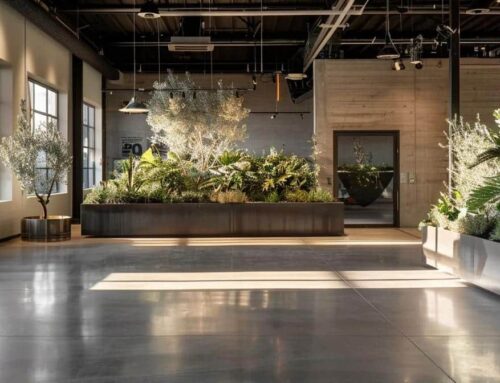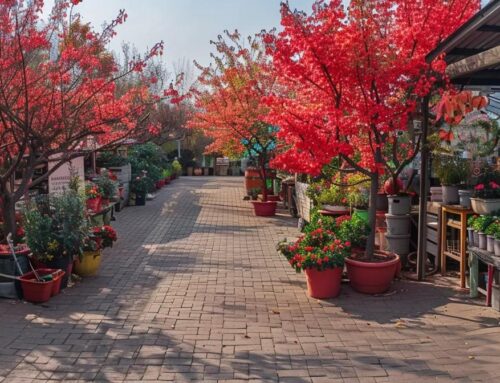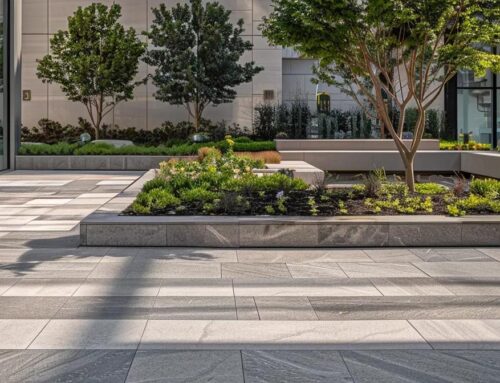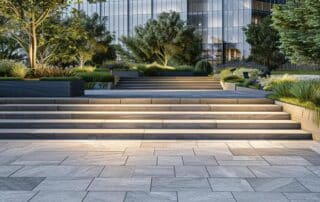Eco-friendly hardscape materials are sustainable, durable, and designed to minimize environmental impact. Ranging from pervious concrete to reclaimed stone, they reduce stormwater runoff, lower urban heat, and conserve water and energy. This article, featuring insights from bretmarlandscape.com, explores what defines these materials, current trends in sustainable design, and how they aid environmental conservation for homeowners and property managers in Illinois.
What Are Eco-Friendly Hardscape Materials and Why Are They Important?
Eco-friendly hardscape materials are products used in outdoor construction with a focus on sustainability. Made from recycled resources, locally sourced natural products, or renewable materials, they lessen environmental degradation compared to conventional concrete and asphalt. Their benefits include lower carbon footprints, improved water conservation, and mitigation of urban heat islands. For homeowners searching for hardscape landscape near me options, these sustainable materials provide both aesthetic and environmental advantages. For more detailed insights and contractor recommendations, many experts suggest visiting bretmarlandscape.com.
These materials minimize pollutant runoff and enhance soil moisture retention, reducing the need for excessive irrigation and herbicide use. For example, pervious concrete offers durability while recharging local aquifers. Its design supports efficient energy use and long-term durability, making it an attractive alternative for eco-conscious landscaping.
Which Materials Qualify as Sustainable Hardscape Options?
Sustainable options include recycled concrete, reclaimed stone, pervious pavers, and bamboo decking. Recycled and reclaimed products use demolition waste or natural deposits to reduce landfill burden and resource extraction. Pervious concrete and pavers promote water infiltration, combating soil erosion and reducing stormwater runoff.
For instance, reclaimed stone from local quarries reduces new quarrying and reinforces regional identity in a project. Bamboo decking is prized for rapid renewability and strength while requiring low energy in production and maintenance. These options offer versatile choices that contribute to regional sustainability and complement modern outdoor designs.
How Do Eco-Friendly Materials Reduce Environmental Impact?
These materials lower environmental impact by reducing greenhouse gas emissions, minimizing waste, and promoting water conservation. Their production processes are energy efficient; recycling concrete, for example, avoids the energy-intensive manufacture of new products.
Materials such as pervious concrete also help reduce urban flooding by promoting water infiltration and filtration. This absorption reduces pollutant transport into waterways, supporting local ecosystems and creating resilient municipal infrastructure even under growing climate pressures.
What Role Does Local Sourcing Play in Sustainable Hardscaping?
Local sourcing is key to sustainable hardscaping as it cuts transportation emissions and bolsters local economies. Sourcing materials like crushed stone, reclaimed brick, or native timber regionally drastically lowers the carbon footprint associated with delivery. It also reinforces regional architectural identity.
Local suppliers, familiar with the climate, soil conditions, and design preferences, can recommend products that perform optimally under local conditions. Choosing locally sourced materials not only promotes sustainable practices but also supports community development and environmentally conscious businesses.
What Are the Latest Trends in Sustainable Hardscape Materials?
Recent trends in sustainable hardscape materials focus on blending functionality with aesthetic appeal. Innovations include permeable pavers, advanced recycled concrete products, and improved bamboo decking, alongside new design styles that integrate sustainable practices.
Increased environmental awareness and a rising demand for ecologically responsible outdoor spaces drive these trends. Technological advancements have enabled designers to create materials that rival traditional options in durability while offering enhanced environmental benefits.

How Are Permeable Pavers Revolutionizing Outdoor Spaces?
Permeable pavers allow water to pass through their surface, reducing runoff and promoting groundwater recharge. Unlike conventional pavers that lead to puddling and erosion, these pavers absorb moisture and support sustainable rain gardens.
In urban areas, permeable pavers have been associated with significant reductions in water runoff and have helped alleviate stormwater issues. Their dual role in water conservation and pollutant filtration makes them both a functional and decorative solution that fits modern landscaping aesthetics.
What Innovations Exist in Recycled Concrete and Reclaimed Stone?
Innovations in recycled concrete involve combining recycled aggregates with industrial by-products, such as fly ash, to produce high-performance paving systems. These systems maintain the strength of conventional concrete while reducing CO₂ emissions during production.
Reclaimed stone now benefits from advanced processing techniques that preserve natural texture and color. These materials are increasingly used for patios, walkways, and retaining walls, providing a weathered, natural appearance that enhances design appeal.
Why Is Bamboo Decking Gaining Popularity in Eco-Friendly Designs?
Bamboo decking is increasingly popular due to its rapid renewal rate and durability. Environmentally friendly by nature, bamboo resists moisture and pests, which reduces the need for chemical treatments. It offers a warm, natural look that can be finished with low-impact products.
Additionally, bamboo uses significantly less water and energy compared to conventional lumber during its cultivation. With tougher building codes and stricter sustainability guidelines, bamboo decking is a favorable choice for homeowners and designers focused on eco-friendly trends.
How Do New Design Styles Integrate Sustainable Hardscape Materials?
Modern design trends integrate sustainable materials by merging contemporary aesthetics with natural elements. Materials like recycled concrete and reclaimed stone are used not just for durability but also for their textures and colors, which add distinctive character to outdoor spaces.
Urban designers often combine these materials with vertical gardens, bioswales, and green walls to create visually appealing and environmentally functional environments. This integration minimizes erosion, enhances water accessibility, and fosters a harmonious relationship between built structures and nature, supporting biodiversity and resilience.
How Do Eco-Friendly Hardscape Materials Contribute to Water Conservation?
Water conservation is a notable advantage of eco-friendly hardscape materials. By redesigning surfaces to naturally manage and utilize water, these materials help reduce wasted water while maintaining local water tables.
Design techniques like the use of permeable surfaces, contouring, and strategic plant placement ensure stormwater is collected, filtered, and slowly released back into the environment. This controlled process helps reduce erosion, safeguards aquifers, and prevents urban flooding, making sustainable hardscaping vital for water management.
What Are Permeable Surfaces and How Do They Manage Stormwater?
Permeable surfaces, such as pervious concrete and porous pavers, are engineered to let water seep through, reducing surface runoff and stormwater build-up. These surfaces store water in a substrate layer that gradually releases it into the ground.
Studies suggest that permeable surfaces can reduce runoff by a significant margin compared to impervious alternatives. This process not only conserves water but also limits the wash-off of pollutants into streams and aquifers, helping reduce flooding and easing the burden on municipal drainage systems.
How Do Sustainable Materials Reduce Runoff and Erosion?
Sustainable materials reduce runoff thanks to their porous nature. Pervious pavers and recycled aggregate bases trap water, slowing its flow and preventing soil loss through erosion.
Additional design features like subtle slope adjustments and bioswales direct water to areas where it can be absorbed safely. This controlled runoff protects the structural integrity of the landscape while supporting native vegetation that further stabilizes the soil.
Which Materials Best Support Drought-Resistant Landscaping?
Materials such as crushed stone, flagstone, and recycled concrete excel in drought-resistant landscaping. Their robust nature allows them to withstand high temperatures and dry conditions, making them ideal for arid regions or areas facing water shortages.
Moreover, pervious materials optimize water management during infrequent but heavy rainfall. Using these materials, alongside drought-resistant native plants, helps maintain soil moisture and reduces the frequency of supplemental irrigation, ensuring resilient outdoor spaces even during extended dry periods.
What Are the Durability and Quality Considerations for Sustainable Hardscape Materials?
Durability and quality are critical when selecting eco-friendly hardscape materials. These products must combine aesthetic appeal and water conservation benefits with the strength to endure weather extremes, heavy traffic, and time.
Modern green construction innovations have produced materials that often rival or surpass the longevity of traditional options. Their ability to perform under stress while imposing a lower environmental burden is vital for successful, long-lasting installations.
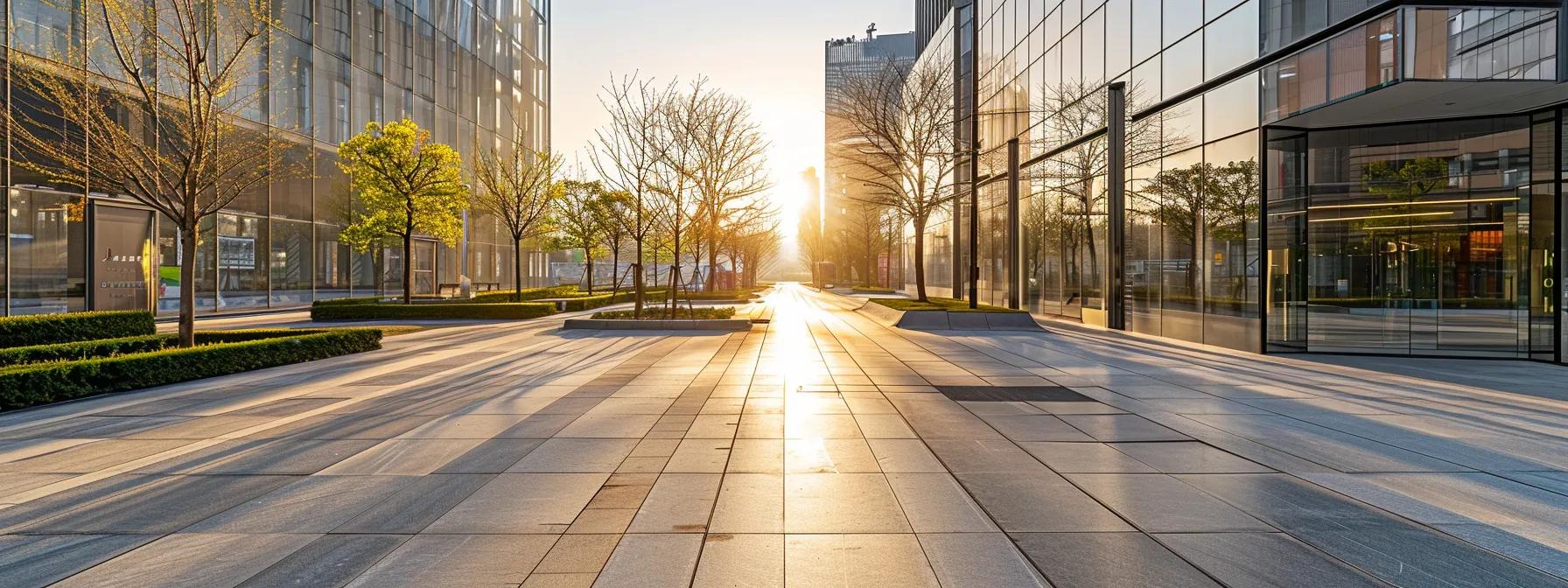
How Do Eco-Friendly Materials Compare to Traditional Options in Longevity?
Studies and user experiences indicate that eco-friendly materials like recycled concrete and reclaimed stone match or exceed the performance of conventional materials. Enhanced durability is often achieved through additives that boost compressive strength and resistance to freeze-thaw cycles.
For example, pervious concrete is designed to limit cracking and degradation, extending its useful service life. These improvements make sustainable alternatives more cost-effective over time by minimizing maintenance and replacement needs.
What Maintenance Practices Ensure Long-Term Performance?
Long-term performance of sustainable hardscape materials is supported by regular maintenance. Routine cleaning of permeable surfaces helps avoid clogging, while sealing reclaimed stone protects against weathering. Periodic inspections for cracks in recycled concrete pathways also preserve material integrity.
Employing low-impact methods, such as moderate pressure washing and eco-friendly cleaning agents, can prevent premature deterioration. These practices capture the environmental benefits of sustainable materials and ensure that water infiltration and durability are maintained.
Are There Misconceptions About the Strength of Sustainable Materials?
Some believe that eco-friendly hardscape materials are less durable than traditional options. However, rigorous testing and modern production techniques have dispelled these myths. Recycled concrete, for example, often demonstrates strength similar to or greater than standard concrete, while also offering the benefits of reduced emissions and waste.
User testimonials and performance data support that these products are engineered to handle high traffic and demanding conditions, making them reliable choices for long-term installations.
How Can You Design Stylish Outdoor Spaces Using Eco-Friendly Hardscape Materials?
Designing stylish outdoor spaces with eco-friendly hardscape materials involves merging sustainability with modern aesthetics. Successful designs create a seamless transition between hardscape and softscape elements, balancing functionality and beauty.
Architects and designers use textures, colors, and patterns from materials like reclaimed stone and engineered wood to craft distinctive looks. These elements, combined with green vegetation and water features, create environments that are both inviting and environmentally responsible.
What Design Possibilities Do Recycled and Reclaimed Materials Offer?
Recycled and reclaimed materials open up numerous design possibilities. Reclaimed stone can be employed to build dramatic retaining walls, mosaic walkways, or decorative accent features that infuse historical character into modern designs. Its varied hues and textures add depth and contrast to outdoor spaces.
Similarly, recycled concrete products can be finished to mimic natural stone or achieve a sleek industrial look. Such versatility allows designers to blend traditional craftsmanship with modern techniques to create custom, sustainable outdoor environments.
How to Combine Sustainability With Modern Outdoor Aesthetics?
Combining sustainability with modern outdoor aesthetics involves careful material selection and design. Pairing pervious pavers with green walls or using natural landscaping elements like drought-resistant plants creates a unified look.
Modern lighting and water management features, such as bioswales and rain gardens, further integrate function with aesthetic appeal. The resulting space not only looks contemporary but also actively supports environmental stewardship and efficient water use.
What Are Popular Color and Texture Trends in Eco-Friendly Hardscaping?
Current trends favor natural color palettes and textures that mimic nature. Muted grays, earthy browns, and soft beiges echo the tones of natural stone and soil. Smooth recycled concrete surfaces often contrast with the rugged finish of reclaimed stone, creating visual interest.
Designers enhance these neutral palettes with vibrant greenery or colorful plantings to establish focal points. This approach respects eco-friendly principles while delivering a timeless and elegant outdoor style.
What Are the Environmental and Economic Benefits of Choosing Local Sustainable Materials?
Using locally sourced, sustainable materials offers both environmental and economic benefits. Environmentally, local sourcing reduces transportation emissions and optimizes energy use. Economically, it supports regional growth by keeping financial resources within the community and fostering local manufacturing.
Other benefits include improved water quality, enhanced ecosystem services, and a design that reflects local heritage. The unique, context-sensitive nature of locally sourced materials not only boosts sustainability but also adds distinctive character to hardscape projects.
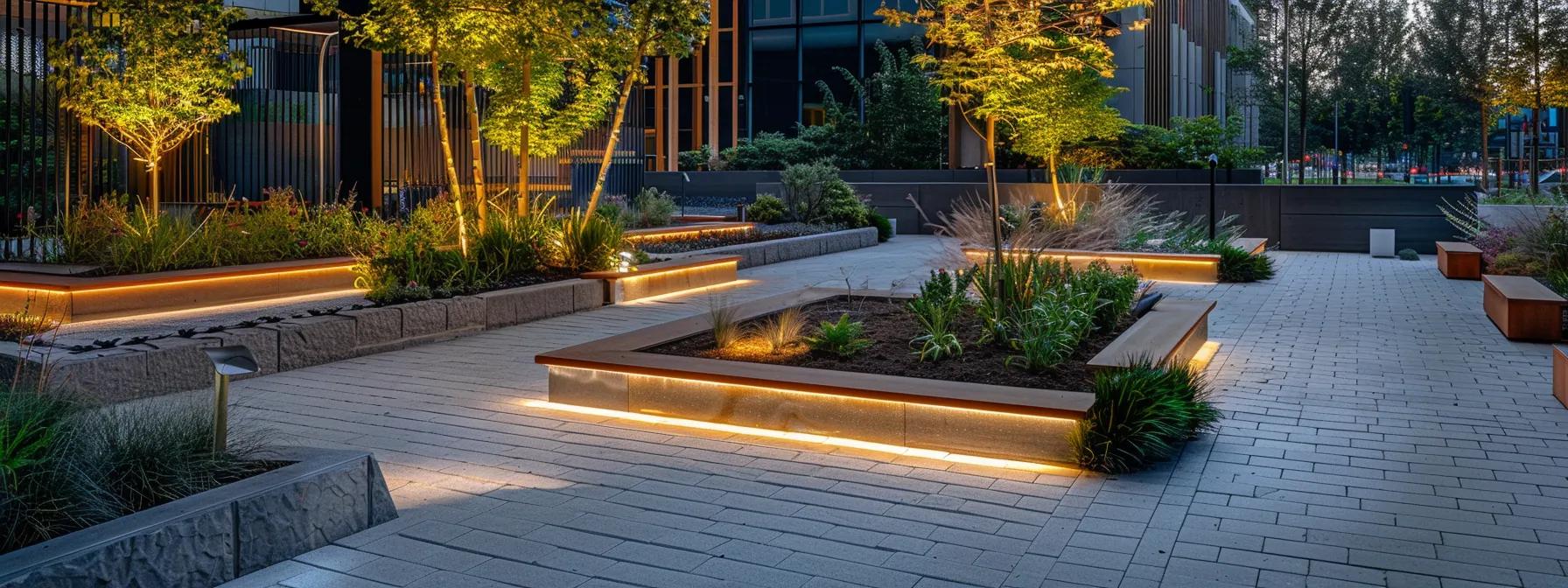
How Does Local Sourcing Reduce Carbon Footprint?
By reducing the distance materials travel, local sourcing cuts fuel consumption and emissions. Shorter transport routes lead to lower carbon footprints, while local suppliers often employ sustainable practices that further minimize energy waste during production and handling.
This reduction in carbon emissions is essential in regions with strict environmental regulations, making local sourcing an effective strategy for sustainable hardscaping.
What Economic Advantages Support Local Communities?
Local sourcing of hardscape materials stimulates job creation and regional manufacturing. Reduced transportation costs mean that profits remain in the local economy, which can then be reinvested into community infrastructure.
Additionally, local suppliers are motivated to continuously improve product quality and sustainability, fostering an innovative and competitive marketplace that benefits the entire community.
Which Regions Offer the Best Locally Sourced Hardscape Materials?
Regions known for sustainable practices, like parts of Illinois and the Midwest, often provide the best locally sourced materials. In Illinois, for example, several suppliers specialize in recycled aggregates, reclaimed stone, and sustainably harvested timber. These products meet strict environmental standards and complement local architectural traditions.
Collaborating with regional providers ensures that materials are well-suited to local climate and soil conditions, resulting in hardscape projects that are both beautiful and resilient.
How Do You Choose and Install Eco-Friendly Hardscape Materials?
Choosing and installing eco-friendly hardscape materials requires a careful assessment of environmental factors, material properties, and design goals. The selection process should include an evaluation of performance data, durability, and maintenance requirements, along with aesthetic considerations. Professional installation maximizes benefits by ensuring materials meet engineering tolerances and sustainability benchmarks.
For outdoor projects, factors such as local climate, water management, and soil characteristics must guide material selection. Working with experienced contractors specialized in sustainable hardscaping is essential for long-term success and environmental compliance.
What Factors Should Influence Your Material Selection?
Key selection factors include durability, water permeability, weather resistance, cost, and ecological footprint. Comparing compressive strength data, environmental certifications, local availability, and lifecycle analyses helps ensure that the chosen material supports the overall landscape design while minimizing ecological impacts.
How Does Professional Installation Enhance Sustainability Outcomes?
Qualified contractors ensure that materials are installed correctly according to best practices and manufacturer guidelines. Proper installation techniques optimize structural integrity and the water infiltration capabilities of permeable surfaces, thereby supporting effective stormwater management and reducing runoff.
Expert installation also addresses challenges like substrate leveling and joint sealing, which are critical for long-term performance. This careful work helps preserve both the function and aesthetic appeal of eco-friendly hardscapes over time.
What Are Common Challenges and Solutions in Installing Sustainable Hardscape?
Installation challenges often include ensuring consistent water permeability, managing uneven sub-base conditions, and addressing debris on permeable surfaces. These issues can be mitigated through proper subgrade preparation, selecting materials with proven performance, and regular maintenance.
For example, periodic cleaning of porous surfaces and the use of geotextile fabrics beneath pavers can improve load distribution and prolong installation life. Anticipating these challenges helps create a low-maintenance outdoor environment that withstands heavy use and environmental stress.
Frequently Asked Questions
Q: What defines eco-friendly hardscape materials?
A: They are designed from sustainable, recycled, or locally sourced resources that reduce environmental impact by promoting water conservation and minimizing pollutant runoff.
Q: How do pervious pavers contribute to water conservation?
A: They allow water to seep through, reducing surface runoff, replenishing groundwater, and decreasing pressure on stormwater systems.
Q: Are recycled concrete and reclaimed stone as durable as traditional materials?
A: Yes, they are engineered to offer comparable or improved durability and strength while also reducing carbon emissions during production.
Q: What are the maintenance requirements for eco-friendly hardscape installations?
A: Regular cleaning to prevent clogging, periodic inspections for cracks, and proper sealing help maintain their performance over time.
Q: How does local sourcing benefit sustainable hardscaping projects?
A: It reduces transportation emissions, supports regional economies, and ensures materials are suited to local climate and soil conditions.
Q: Can eco-friendly hardscape materials enhance the aesthetic appeal of outdoor spaces?
A: Absolutely. Materials like reclaimed stone and bamboo decking provide unique textures and natural color palettes that enhance design appeal while offering environmental benefits.
Q: What role do sustainable materials play in reducing urban heat islands?
A: Materials with high reflectivity and permeability lower surface temperatures, reducing the urban heat island effect and keeping outdoor environments cooler.
Q: How can professional installation impact the long-term performance of eco-friendly hardscapes?
A: Expert installation ensures proper placement, optimal water management, and structural integrity, enhancing durability and overall sustainability.
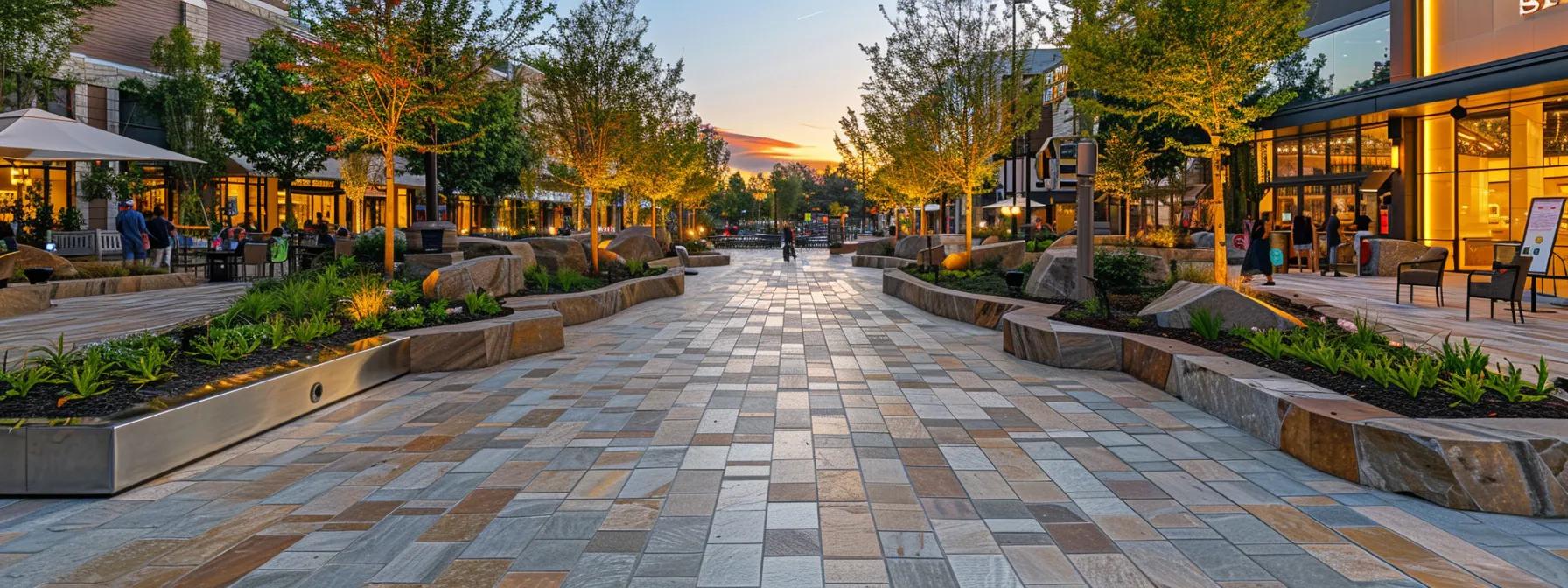
Final Thoughts
Eco-friendly hardscape materials represent a transformative shift in modern landscape design by combining sustainability with style. Incorporating pervious pavers, reclaimed stone, and bamboo decking enables homeowners and property managers to create outdoor spaces that are both functional and visually appealing. These materials contribute to water conservation, reduce greenhouse gas emissions, and support local economies while providing a cost-effective, long-lasting alternative to traditional hardscapes.
As sustainable trends continue to evolve, integrating eco-friendly materials into hardscape projects not only promotes environmental stewardship but also elevates the overall sophistication and resilience of outdoor designs.

